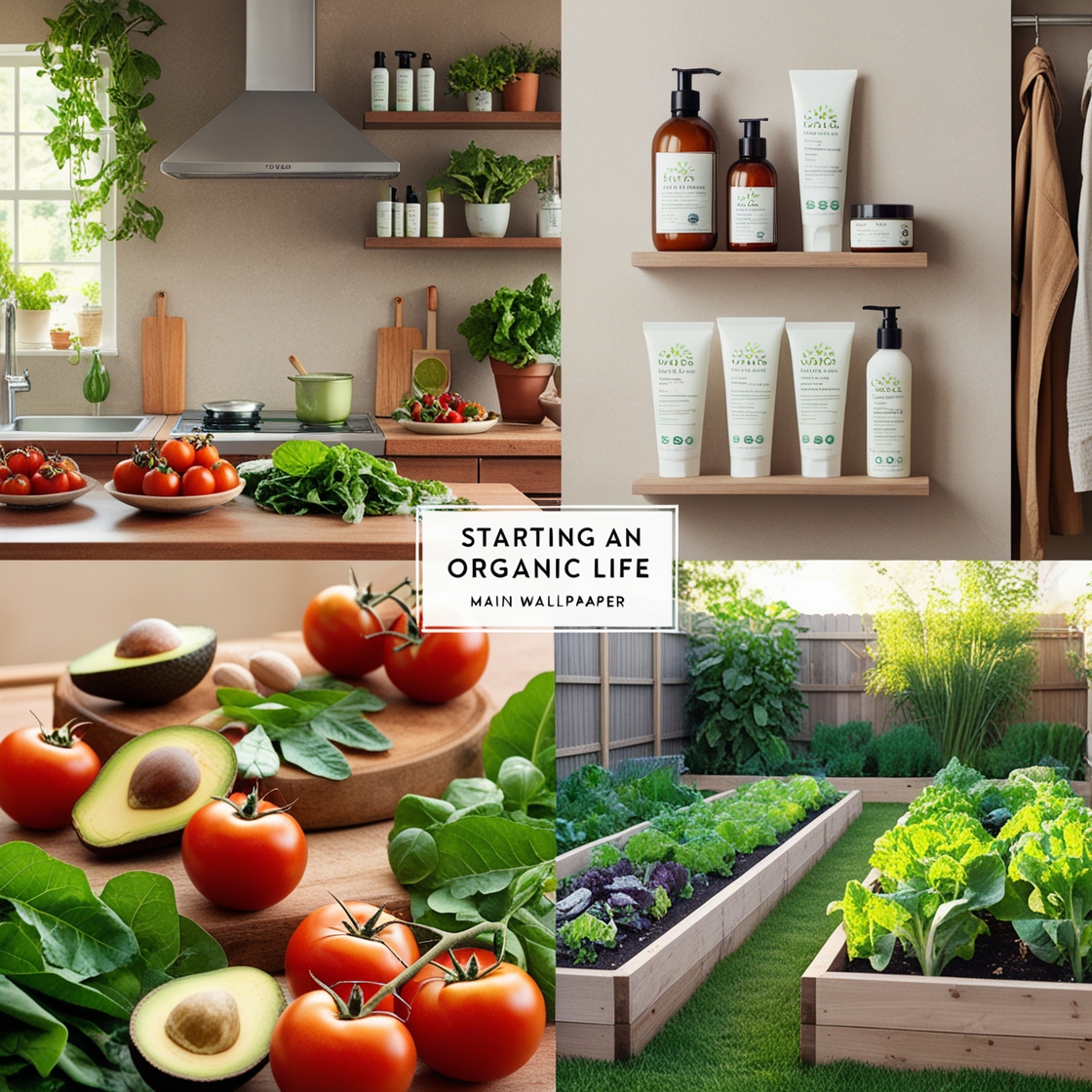Embarking on an organic lifestyle is a rewarding journey towards better health, sustainability, and a closer connection with nature. Whether you're motivated by personal well-being, environmental concerns, or a desire to return to simpler, purer ways of living, starting an organic life can be an enriching experience. Here's a step-by-step guide to help you transition smoothly and successfully.
Step 1: Understand What Organic Really Means
Before diving in, it's essential to understand what "organic" truly encompasses. Organic products are those made without synthetic pesticides, fertilizers, genetically modified organisms (GMOs), antibiotics, or growth hormones. They prioritize natural processes and sustainability, ensuring that the food you consume and the products you use are safe, healthy, and environmentally friendly.
Key Points:
- Organic farming respects natural ecosystems.
- Organic products are free from harmful chemicals.
- The organic label also often implies ethical and humane treatment of animals.

Step 2: Assess Your Current Lifestyle
Take a moment to evaluate your current habits and choices. Understanding where you stand will help you identify areas that need change. Consider your diet, household products, personal care items, and even your clothing.
Questions to Ask Yourself:
- How much of your diet consists of processed or non-organic foods?
- Are your skincare and cleaning products made with synthetic ingredients?
- Do you prioritize sustainability in your purchases?
Step 3: Start with Food: Transition to an Organic Diet
The easiest and most impactful way to begin your organic journey is by changing what you eat. Start by incorporating organic fruits and vegetables into your meals. Gradually expand to organic grains, dairy, meat, and snacks.
Tips:
- Prioritize buying organic for the "Dirty Dozen" (fruits and vegetables with the highest pesticide residue).
- Shop at local farmers' markets to get fresh, organic produce.
- Experiment with organic recipes to make the transition enjoyable.
Step 4: Switch to Organic Personal Care Products
Your skin is your body’s largest organ, and it absorbs much of what you put on it. Switching to organic skincare, cosmetics, and personal hygiene products ensures you’re not exposing yourself to harmful chemicals.
What to Look For:
- Organic certifications on labels.
- Ingredients like natural oils, essential oils, and plant-based extracts.
- Products free from parabens, sulfates, and synthetic fragrances.
Step 5: Clean Up with Organic Household Products
Many conventional cleaning products are filled with toxic chemicals that can harm your health and the environment. Opt for organic or natural alternatives that are just as effective without the dangers.
Suggestions:
- Use vinegar, baking soda, and essential oils for DIY cleaners.
- Look for eco-friendly brands that offer organic cleaning solutions.
- Reduce waste by choosing reusable cloths and biodegradable products.
Step 6: Go Green with Your Wardrobe
Fast fashion has a significant environmental impact. Transitioning to organic, sustainable clothing not only benefits the planet but also your personal health.
Actions to Take:
- Choose clothing made from organic cotton, hemp, bamboo, or recycled materials.
- Support brands that prioritize fair trade and sustainable practices.
- Consider a minimalist wardrobe with versatile, high-quality pieces.
Step 7: Grow Your Own Organic Garden
If you have the space, growing your own organic garden is a fantastic way to ensure fresh, chemical-free produce. It also fosters a deeper connection with nature and promotes self-sufficiency.
Getting Started:
- Begin with easy-to-grow vegetables like tomatoes, lettuce, and herbs.
- Use organic seeds and compost.
- Practice sustainable gardening methods like crop rotation and companion planting.
Step 8: Educate Yourself and Stay Informed
The organic lifestyle is constantly evolving, with new products, practices, and research emerging regularly. Stay informed by reading books, following blogs, and joining organic communities.
Resources:
- Follow reputable organic lifestyle blogs and social media accounts.
- Join local or online organic farming and gardening groups.
- Attend workshops or take courses on organic living.
Step 9: Transition Mindfully and Sustainably
Switching to an organic lifestyle doesn’t have to happen overnight. Take it one step at a time, making sustainable changes that you can maintain long-term. Remember, it’s about progress, not perfection.
Final Thoughts:
- Celebrate small victories along the way.
- Share your journey with friends and family to inspire others.
- Keep your motivation strong by remembering why you started.
Conclusion
Starting an organic life is a journey of mindfulness, health, and sustainability. By taking these steps, you’ll not only improve your well-being but also contribute to a healthier planet. Embrace the change, and enjoy the benefits of living organically, one step at a time.